Hello again television series fans,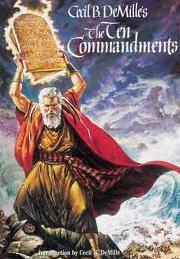
Thank you for the comments here, on twitter and on Facebook about my first article.
In my last article, I pointed out that it’s quite normal to become engaged with and attached to the characters in a show that we love. Writers are paid to make the characters likeable; to portray characters in a way that we, as viewers, can identify with.
This technique isn’t exclusive to television. Screenwriters, novelists and comic book writers all practice this very vital technique as one of the Ten Commandments of Writing (reference link is only one of many examples you can Google).
Science fiction, like any other fiction, benefits from great characters. Characters who make us feel sympathy, anger, sorrow and joy are a hallmark of any good writer’s toolkit.
Are we as viewers manipulated by what we watch? In some ways, we are.
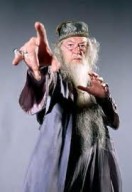 There’s a rule in drama, especially in sci-fi: If there’s no body, he’s not dead. (You can call it the Dumbledore Rule: If, and only if, a character dies, there’s a body, and he’s buried, he’s dead). Lately, however, writers have focused on the Anyone Can Die Law.
There’s a rule in drama, especially in sci-fi: If there’s no body, he’s not dead. (You can call it the Dumbledore Rule: If, and only if, a character dies, there’s a body, and he’s buried, he’s dead). Lately, however, writers have focused on the Anyone Can Die Law.
This “law” is used to up the ante of drama as the series unfolds. If anyone can die, then no one is safe. Death is dramatic. We as viewers then react in predictable ways. This is why the faceless Red Shirt characters die in droves, while the Big Bad gets a second chance at redemption, or at least is taken out in the most spectacular blaze of glory the FX budget allows. 
So when a hero’s death turns out to be permanent, the fans feel cheated. This will generally cause a tidal wave of fan protest and revisionist Fan Fiction. Actor Ed Quinn left Eureka at the end of season 2 due to a disagreement with the producers over his character development.
 In the episode, “I Do Over”, Sheriff Carter (Colin Ferguson) awakes to find himself stuck in a time loop on Allison Blake’s (Salli Richardson) and Nathan Stark’s (Ed Quinn) wedding day. After Carter discovers the source of the problem and convinces Stark on his 5th or 6th rotation through the day that he isn’t crazy, Stark realizes that if he doesn’t stop the time loop everyone would die.
In the episode, “I Do Over”, Sheriff Carter (Colin Ferguson) awakes to find himself stuck in a time loop on Allison Blake’s (Salli Richardson) and Nathan Stark’s (Ed Quinn) wedding day. After Carter discovers the source of the problem and convinces Stark on his 5th or 6th rotation through the day that he isn’t crazy, Stark realizes that if he doesn’t stop the time loop everyone would die.
Said Mark Wilson of About Dot Com, “Nathan has shown considerable complexity and depth, and has been explored and developed considerably more even than some of the other leads. His  apparent death is a real loss for the show.
apparent death is a real loss for the show.
His (Nathan’s) last words to Carter were ‘I’ll see you around, Jack.’ Those last words, though, are also part of the creators playing this moment for all its worth with the fans”. Although writers of all genres can be accused of manipulation of the viewers or readers, it’s done with the best of intentions. They earn their pay checks by keeping things interesting.
 Writers walk a fine line between keeping things interesting and antagonizing their audience with the death of a hero.
Writers walk a fine line between keeping things interesting and antagonizing their audience with the death of a hero.
Arthur C. Clarke, world famous science fiction author, inventor and futurist, when asked about his writing technique, provided his fans with Clarke’s First Law, which states, “When a distinguished but elderly scientist states that something is possible, he is almost certainly right. When he states that something is impossible, he is very probably wrong.” Clarke’s law is easily transferred to many science fiction shows.
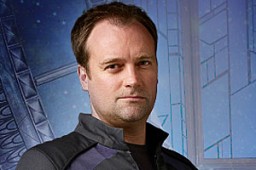 An example of this is Stargate Atlantis’ Dr. Rodney McKay (David Hewlett) who, rarely wrong, has a knack for solving the problems created within the plot. Even when he has an emotional outburst declaring that a solution is impossible, we know that McKay will find a way.
An example of this is Stargate Atlantis’ Dr. Rodney McKay (David Hewlett) who, rarely wrong, has a knack for solving the problems created within the plot. Even when he has an emotional outburst declaring that a solution is impossible, we know that McKay will find a way.
Writing techniques are not the only way a story is told when we watch our favourite show. Images and sounds are also used. Tight shots and close-ups are often used to demonstrate a character’s emotional reaction to an event. A character’s emotional reaction helps to build the story. Music is one of the most important techniques used to encourage viewers to have an emotional response. Music is added to make a shot look more suspenseful, more dramatic or more frightening. When we watch a particular show, we often do not notice the impact that music can have.
However, if you watch a show with the sound muted, you will notice a distinct difference in the emotional e ffect of the show. “Manipulation is a necessary part of the creation of film and television. You have to handle images and words—sort them, organize them and put them together—in order to make a message meaningful”, said Dr. Renee Hobbs, Associate Professor of Communications at Babson College near Boston.
ffect of the show. “Manipulation is a necessary part of the creation of film and television. You have to handle images and words—sort them, organize them and put them together—in order to make a message meaningful”, said Dr. Renee Hobbs, Associate Professor of Communications at Babson College near Boston.
And of course the camera itself, while it captures some aspects of perception, shapes images just by choosing what to focus on and by the very look of the image itself. Camera techniques like the close-up, the pan, the angle shot, the freeze-frame, the time lapse and the aerial view all influence our perceptions of a scene. A producer and editor can do wonders by usi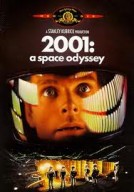 ng many different images of a single scene to make something look more exciting and interesting. This kind of manipulation is increasingly necessary because according to experts, television has nurtured a set of expectations that everything be visually dynamic.
ng many different images of a single scene to make something look more exciting and interesting. This kind of manipulation is increasingly necessary because according to experts, television has nurtured a set of expectations that everything be visually dynamic.
In the science-fiction classic 2001: A Space Odyssey, Stanley Kubrick spends a great deal of screen time before the first line of dialogue. His film has a very thin plot, and very little dialogue. Nevertheless, it is utterly engaging. This surely has a lot to do with the way Kubrick stages spaceflight like ballet, and the way music and images make up a greater whole that seems to speak to us on a non-literate level.
In a similar way, George Lucas‘ Star Wars saga is infused with a kind of visual storytelling that depends 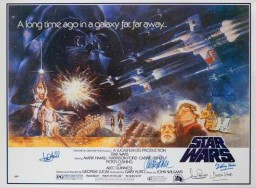 greatly on the use and juxtaposition of colours, lighting, musical passages and visual motifs, none of which need dialogue to be understood or experienced. Lucas has often insisted that he approaches Star Wars movies as silent films.
greatly on the use and juxtaposition of colours, lighting, musical passages and visual motifs, none of which need dialogue to be understood or experienced. Lucas has often insisted that he approaches Star Wars movies as silent films.
How does all this affect us as viewers? Effective story telling in film format, be it a movie or television show, is a group effort. Writers, actors, directors, editors and producers work together to create the shows we enjoy watching. Thanks to the talent and creativity of these people, we invest ourselves in the shows and in the characters we love. The people who create the show are emotionally invested as well. To them, it’s their baby. Naturally, when criticised, some of them may become defensive since we all want our work to be admired and appreciated.
But, at the end of the day, it’s just a show or a movie. If we realize that manipulation of our emotions is part of the art or game of storytelling, then it will not be so easy to get caught up in the cancellation of a show and the loss of favourite characters.
As always thank you for reading and visiting WormholeRiders News Agency. Please feel free to leave a spam free comment or question here or click one of the social media icons below to share this news article.
if you prefer (as so many of our visitors do) you may also visit and follow WHR on Twitter, Facebook or contact me on Twitter with your comments or questions.
Sincerely,
ArcticGoddess1 (Patricia Stewart-Bertrand).

hello. I agree with both your articles and that fans get nasty and blame the wrong people like syfy or other networks when if fact they did not support by watching the shows and then complain when they are canceled. and we are all manipulated by a good book movie or tv show. also the fans should never illegally download the programs no matter what.
I agree completely. No one can produce a show without money. That money comes from advertising. Advertisers will not fund shows no one is watching, so the only real option, if we want our favorite shows to continue, is to watch them.